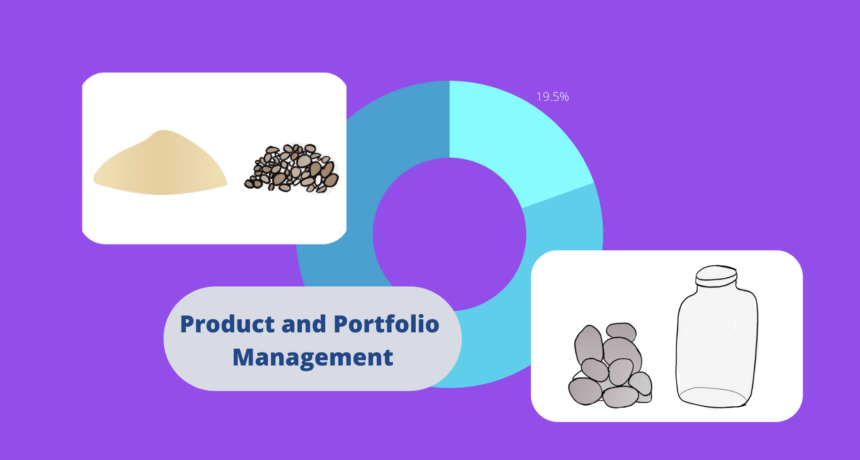Prioritization is the most challenging and impactful part of product management. The Rock, Pebble, and Sand Product Management approach is an effective way to prioritize across products and portfolios.
The Rock, Pebble, and Sand approach is a product management framework originally popularized by PayPal product leaders. Product management is a juggling act with a constant influx of product ideas coupled with unplanned production issues and Rock, Pebble, and Sand helps teams prioritize. As part of the Responsive Product Portfolio Management framework, the approach connects OKRs with Agile and is often carried out in quarterly product planning.
Here’s how this technique can help your teams align the company and achieve your product OKRs effectively.
Rock, Pebble, and Sand Explained
Imagine you are filling a jar with rocks, pebbles, and sand. Each piece represents the potential benefits and extent of effort required to pursue a product idea. The jar represents the available engineering capacity in a given time, e.g. a quarter.
The rocks represent the biggest potential impact and effort. For that reason, the rocks need to be prioritized first and added to the jar before anything else.
Next, add the pebbles; these have less strategic impact, but the impact can accumulate significantly.
The sand comes last and represents small effort tasks or bug fixes.
Building a mobile app is a good example of a rock. As it follows, pebbles would be UX improvements and sand would be any production bugs reported by a customer.
While stakeholders primarily focus on the rocks, all these elements are important to engineering teams who will prioritize protecting the shipping time for big rocks over those for pebbles or sand.
Placing the most important product in the jar first allows teams to prioritize and fit more pieces into a fixed capacity jar.
The Evolution of Rock, Pebble, and Sand
David Sacks, the first COO of PayPal, founder of Yammer, and now founder of Craft Venture, wrote a Medium post on the Rock, Pebble, and Sand method practiced at PayPal since its early days. We have been fine-tuning this approach when it comes to product operations for over a decade both within PayPal and at small to mid-sized companies like Shutterfly, Bigcommerce, and Feedzai.
We expanded the approach further with the concept of product portfolio management to incorporate a “variable-sized” jar when prioritizing product initiatives and allocating engineering resources across teams.
Why Allocate Resources Using a Rocks, Pebbles, and Sand Portfolio Approach?
With the Rocks, Pebbles, and Sand approach, product leaders have a framework to categorize requests according to the business outcome and request’s contribution.
The variable jar approach recognizes that at any given time, product needs to support many goals competing for the same resources. For example, user acquisition, platform scalability, and new market expansion.
Prioritizing big rocks for these varied goals results in an apples to oranges comparison. Instead, “virtual jars” of various sizes represent the amount of resource allocation applicable to the product team’s goals. The rocks fit as acquisition goals in the acquisition jar, and platform rocks in the platform jar, and so on.
Why are separate jars better? Because this enforces a level of accountability at the leadership level. Leaders define goals. Leaders must decide what resources should be applied to these goals. These decisions give their teams what they need to be innovative and create products with the essential resources.
Goals shift according to market and business conditions, and so should the number and the size of jars. For example, in Q1, there might be a 20% allocation to tech debt and 50% in acquisitions. Whereas, in Q3, there may be a 40% investment in tech and 20% in user acquisition because the user growth has strained the platform.
Transform With A Proven Practice
At PayPal, we proposed, evaluated, and prioritized rocks and used this information to create engineering budgets and headcounts annually. As the pace of change accelerated, we increased our product planning to a quarterly practice during our agile transformation. Ultimately, we rolled out the product portfolio management framework, connecting annual vision and goals with quarterly milestones and adjusting the portfolio allocation responsively. This practice allowed rapid product innovation while ensuring the continued improvements of existing product experience and growth.

Categories
Product Leadership | Product Management | Product Operations | Product Portfolio Management
Share on Social



